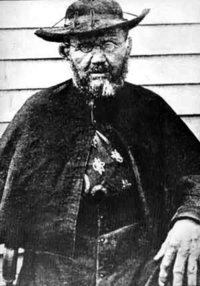TOKYO, June 8 Kyodo
A group of leprosy patients and their supporters have urged the government to apologize for keeping in formalin jars specimens of fetuses and newborn babies of leprosy patients for decades after World War II.
The group recently made the request to the Ministry of Health, Labor and Welfare following the discovery of 114 such specimens at a medical institute and five state-run sanitariums across Japan established under the former government policy of quarantining leprosy patients.
The group is demanding that the state give the fetuses and babies proper burials, hold memorial services for them and issue a formal apology.
The group has not been unanimous, however, in determining whether it should report these cases as deaths under unusual circumstances or ask the police to conduct autopsies.
''We want to take steps so that we will comply with the wishes of the sufferers as much as possible,'' a health ministry official said.
The existence of the specimens was confirmed by an independent council on investigations into issues related to leprosy.
The council found that in some cases, the newborn babies were apparently left to die by sanitarium staff members.
The council said it is led to conclude that these cases constitute murder and has proposed that they should be reported to the police and other relevant authorities.
The group's representative said one of the five sanitariums is considering reporting the cases to the police, while another is opposed to it, and the remaining three have not commented.
All five sanitariums agree that the fetuses and babies should be properly buried, and are asking the health ministry to act consistently regardless of which sanitarium it is dealing with.
The group also requested that the health ministry promptly bury or cremate the fetuses and babies and take the council's proposals seriously. It also requested that the state apologize for its action and build a memorial for the fetuses and babies.
In a report published in January, the council said state authorities had conducted illegal abortions at these sanitariums. Of the 114 specimens, at least 29 are suspected of belonging to those left to die after birth.
The council said it believes that these actions could constitute murder and the abandoning or harming of bodies in possible violation of the Penal Code.
The five sanitariums are in Tokyo and Aomori, Shizuoka, Okayama and Kagoshima prefectures.
Japan's leprosy quarantine policy was established in 1907 and continued even after World War II with the creation of the Leprosy Prevention Law in 1953.
Until the law was repealed in 1996, Japan segregated leprosy patients in isolated sanitariums for decades, even after it was learned that the illness, now known in medical terms as Hansen's disease, is not highly contagious.
In March, the council issued a final report saying doctors' false conviction that leprosy was incurable, backed by the health ministry's preoccupation with securing a budget for sanitariums, resulted in the expansion of the quarantine policy in the postwar years.
COPYRIGHT 2005 Kyodo News International, Inc.
COPYRIGHT 2005 Gale Group



